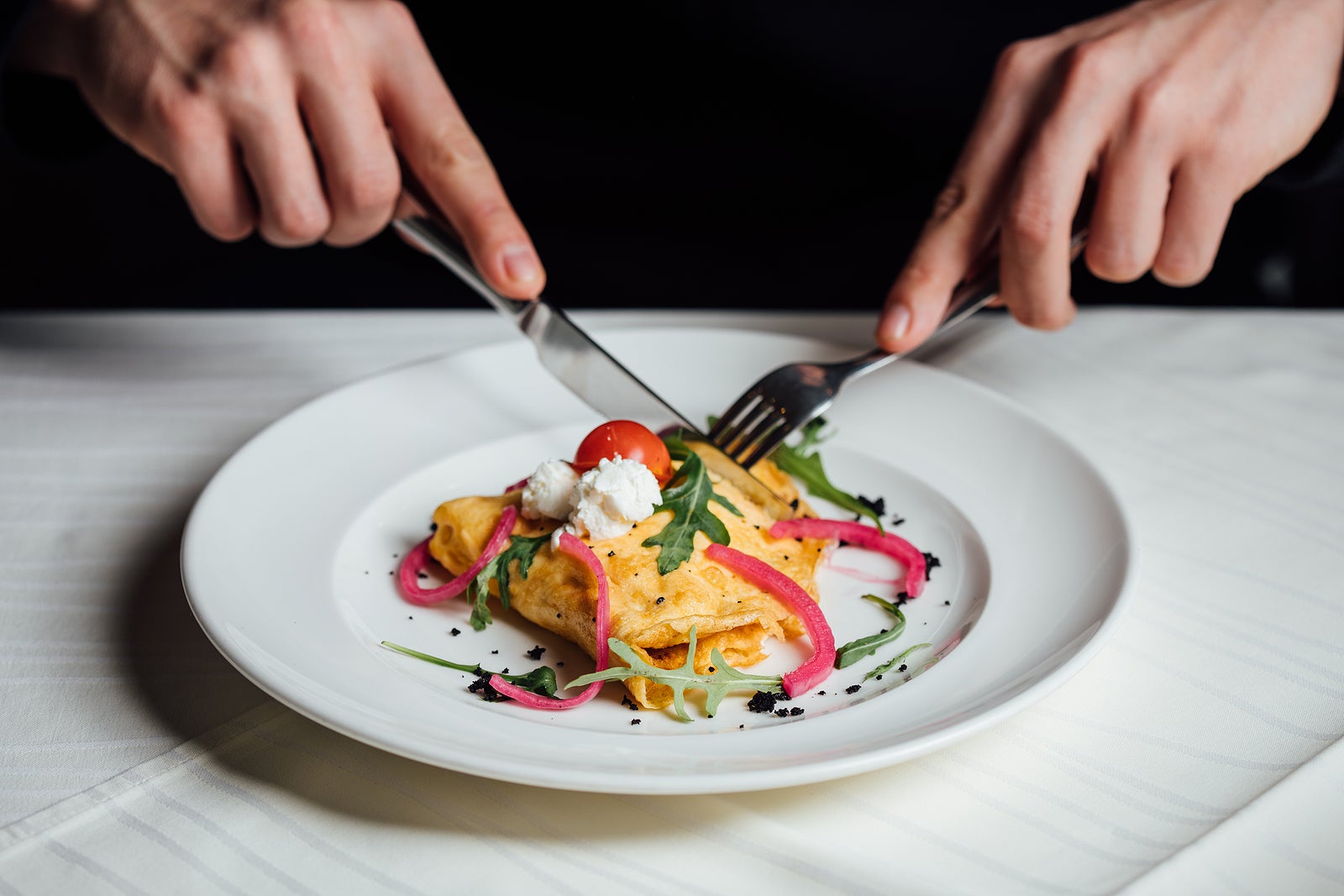
Interested in protecting that long-cherished family favorite? Or perhaps you’re a chef or restaurateur interested in preserving commercial advantage against potential competitors and former employees?
Protection of food products serves as a valuable case study for comparing and contrasting various IP strategies. So take a seat as we present an extensive menu of options.
Patent
As explained in our recent piece on effective branding strategies through patent protection, a novel dispensing mechanism unique to the specific type of food, can indirectly provide a measure of protection, while contributing to the brand essence itself. For instance, there are “dispensing valves for gas pressure containers“ (i.e. Reddi-Wip) US2704172; “life saver package“ (i.e. Lifesavers) US2926833; “quick opening dough container“ (i.e. Pillsbury) US3506183.
Utility patent protection may be available for a new process or composition of matter in the context of food products. However, the applicant must establish “a coaction or cooperative relationship between the selected ingredients which produce a new, unexpected, and useful function.” Application of Levin, 178 F.2d 945, 948 (Cust. & Pat. App. 1949).
As such, few food products are capable of withstanding the non-obvious requirement for a utility patent, but successful examples have included “improvement in pepper sauce” (i.e. Tabasco) US558393; “flaked cereals and process of preparing same” (i.e. Corn Flakes) US1404539; “fruit extraction and infusion” (i.e. Craisins) US5320861; “process of producing fried chicken under pressure” (i.e. Kentucky Fried Chicken) US3245800.
From a practical standpoint though, even if utility patent registration is available, details would then be publicly available in the patent claims. Also, longstanding family recipes would be ineligible since only the actual inventor could apply within one year of first public disclosure. Patent protection does provide a twenty-year grant of exclusivity and can be licensed, assigned, or event used as collateral for securing financing though.
Meanwhile, just imagine the potential marketing value for an enterprising restaurateur designating the food product as ‘patent pending’ even if registration is eventually denied. As a practice pointer, having the USPTO submission marked as ‘confidential’ may allow for trade secret protection should the patent application be refused.
Also, one should claim as broadly as possible in regard to details such as ingredients, temperatures, and production methods. Finally, design patent protection offers yet another path. While the subject matter may be deemed non-patentable, rights could be claimed in the food item’s physical appearance instead. Examples include “candy bar” USD593276S; “pretzel cracker” USD375396S; “serving tray with shrimp” USD404612S.
Trade Secret
Although a bit nebulous as compared to other forms of intellectual property as there’s no ‘trade secret’ application to be filed per se, one simply obtains protection in these recipes and formulations by preserving the ingredients and methodologies through certain operating procedures designed to prevent public disclosure.
Basically, under 18 U.S.C. § 1836(b) there must be proprietary information that is misappropriated. As such, it is strongly recommended that a trade secret policy is implemented, including reference to trade secrets in employment agreements, including non-disclosure provisions. Written materials should be clearly designated as ‘confidential/trade secret’ information. Additional reference should be made during onboarding, employee training, and exit interviews.
Meanwhile, access should be restricted and production segmented as part of these detailed company protocols. Whether an enforceable trade secret exists is then decided through litigation as unlike other forms of intellectual property protection, there’s no automatic presumption of rights. Once the proprietary information becomes public knowledge, trade secret protection will cease.
Furthermore, reverse-engineering is not prohibited as trade secret law only protects against misappropriation. For instance, it’s commonly-acknowledged that the unique blend of Kentucky Fried Chicken ’11 secret herbs and spices’ is produced by two separate manufacturers, each creating half of the same, prior to their delivery to franchisees. However, the recipe itself is still stored inside the corporate vaults, as the literal embodiment of trade secret protection.
Likewise, Coca-Cola syrup is delivered to the bottlers who then add carbonated water to complete the recipe. Allegedly, only two senior company executives are permitted to know the formula at any given time and they’re prohibited from traveling together for added safety.
Written Agreement
Often utilized as part of an effective trade secret strategy are confidentiality agreements, non-disclosure agreements, non-compete agreements, and employee handbooks containing the same. Whether executed by contract manufacturers, distributors, franchisees, or employees, interested parties are essentially agreeing to preserve proprietary knowledge in exchange for valuable consideration.
Furthermore, through such employment agreements, recipes are deemed “works for hire” and “trade secrets” that belong to the restaurant rather than the chef who actually created the food product. Such agreements may be difficult to enforce, however, and just one breach of confidentiality can have disastrous effects.
As a result, once these agreements have been signed, companies can seek injunctive relief to prevent movement to competitors and other forms of misappropriation per the Uniform Trade Secrets Act. [See e.g. Bimbo Bakeries USA, Inc. v. Botticella, No. 10-1510, 613 F.3d 102 (3d Cir. 2010) (enjoining change of employment for company executive with knowledge of Thomas’ English Muffins manufacturing process for distinctive ‘nooks and crannies’)].
Copyright
Copyright is somewhat limited in this context as it simply protects original works of authorship fixed in a tangible medium of expression against copying by others. In other words, the underlying food ingredients and processes are deemed functional and not covered, although it could be possible to obtain copyright registration in the visual appearance of a food product or if certain creative features were deemed separable. But if one were to apply for just a recipe under copyright, there could be a refusal based on lack of adequate literary expression, also known as insufficient copyrightable subject matter.
While a compilation in the form of a recipe book could be accepted, particularly if it includes other explanatory information and photographs, realistically, as long as others avoid copying said content for producing their own cookbooks, then establishing actionable infringement of particular recipes could be difficult under the idea-expression dichotomy.
Furthermore, similar to patent protection, public disclosure is required, which is usually not advantageous. However, by registering their recipe book for copyright, chefs may be able to informally stake a claim to their body of work, at least within professional circles, despite having limited enforceability. In such cases, copyright registration may provide some minimal deterrent value, while also serving as documentary evidence of origin within the industry.
Trademark
Finally, no discussion would be complete without touching upon trademark protection. Although it is still quite difficult to successfully apply for specific flavor profiles, as explained in our earlier article on special forms of trademark protection, unique names, logos, packaging designs, product configurations, and even restaurant layouts are vital for success in the crowded marketplace and could be eligible for trademark registration.
For instance, rolled oats are simply a commodity good, previously sold in bulk, and likely ineligible for patent, copyright or even trade secret protection. Packaged under a distinctive product name in a now-familiar cylindrical container, along with its trusted mascot, Quaker Oats has become Fair Lakes, Chantilly, VA 22033e a venerated brand and category leader. Configuration marks are another option. Examples include conical candies (i.e. Hershey’s Kisses) Reg. No. 1,038,025; pyramid candies (i.e. Toblerone) Reg. No. 2,649,833; bowl-shaped tortilla chips (i.e. Tostitos Scoops) Reg. No. 2,766,278; bear-shaped cookies (i.e. Teddy Grahams) Reg. No. 2,481,836; pretzel crackers (i.e. Pretzel Crisps) Reg. No. 4,036,701; honeycomb-shaped breakfast cereal (i.e. Honeycomb) Reg. No. 2,316,631.
One successful protection strategy would involve patent registration for a fifteen or twenty year grant of exclusivity, emphasizing distinctive product features with extensive advertising. Once secondary meaning is established, rights could then be extended indefinitely through trademark registration. Likewise, Kentucky Fried Chicken and Coca-Cola have achieved tremendous success by pairing trademark registration with trade secret protection.
In other words, even if someone were to completely reverse-engineer either recipe for an identical taste, it still wouldn’t be considered equal to Kentucky Fried Chicken or Coca-Cola, due to billions spent on advertising, creating unparalleled brand equity and marketing cachet. As explained above, effective IP options are somewhat restricted in the food and recipe space, including a more limited role for copyright and patent protection.
Focusing instead on trademark registration, also coupled with trade secrets and written agreements can serve as a viable strategy. Not to mention, this approach offers an unlimited duration of protection, unlike the current fifteen or twenty year grant of exclusivity with public disclosure needed for patent registration. Whether trademarks are potentially more valuable than trade secrets, due to the arguably illusory nature of the latter and primary marketing benefits of the former, both are invaluable for epicurean entrepreneurs and culinary creators alike.
1592 Views












